- Home
- Simon Winchester
Atlantic Page 3
Atlantic Read online
Page 3
Before what geologists like to think is too much longer, the Atlantic will begin to change its aspect and size very dramatically. Eventually, as the continents around it shudder and slide off in different directions, it will start to change shape, its coasts (according to the currently most favored scenario) will move inward and become welded together again, and the sea will eventually squeeze itself dry and vanish into itself. Planetary forecasters estimate this will take place in about 180 million years.
That is no mean life span. Assume for the sake of argument that the world’s total existence, from the postmolten Hadean to the cool meadows of today’s Holocene, encompasses some 4.6 billion years. Once tallied up, the Atlantic’s 370 million years of existence as a separate body of water within that world will have made up something like 8 percent of the planet’s total life. Most other oceans that have come and gone have existed for rather shorter periods: so far as other competing claims for longevity are concerned, the Atlantic will probably turn out to be one of the world’s longest-lived, a potential old-timer, a highly respectable record breaker.
It is both possible and reasonable, then, to tell the Atlantic Ocean’s story as biography. It is a living thing; it has a geological story of birth and expansion and evolution to its present middle-aged shape and size; and then it has a well-predicted end story of contraction, decay, and death. Distilled to its essence it is a rather simple tale to tell, a biography of a living entity with a definable beginning, a self-evident middle, and a likely end.
But then there is very much more to the tale than that. For we cannot forget the human aspect of the story.
Humans have lived around the Atlantic’s peripheries and on its islands, and have crossed and recrossed it, plundered it and fought on it, seized it and surveyed it and despoiled it, and in doing so have made it quite central to our own evolving lives. That is a story, too—a story quite different from, and very much shorter than, that of the making and unmaking of the ocean itself, but one that is yet vastly more important to us as human beings.
Humans were not there when the ocean formed. We will not be there when it ceases to be. But for a definable period, poised almost in the midlife of the ocean itself, we humans arrived, we developed, and—or so we like to think—we promptly changed everything. Only by telling this second story, the kernel within the main shell of the first, can we recount in full the life of the Atlantic Ocean. The physical ocean’s history of opening and closing then becomes the context, the frame, for the history of humanity’s intimate involvement with and within it.
That human story began when man first settled on the Atlantic’s shores. As it happens, mankind spilled down to the sea most probably in southern Africa, and he did so quite possibly (and most fortuitously for this account) very close to Africa’s southern Atlantic shores. What follows from that moment is every bit as complicated and multidimensional as one might imagine: the human story of the ocean swiftly becomes a saga of a mélange of peoples and parallels, of diverging languages and customs, of mixtures of acts and events, achievements and discoveries, of confusions and contests. It is a tricky tale to tell. Simple chronology might suit very well the story of the making of the physical sea itself—but the details of the human experience are scarcely so amenable.
For how would it be possible to knit together the experience of, say, a Liberian fisherman with that of an atomic submariner on patrol off Iceland? Or to link the life of an amethyst miner on the shores of Namibia with that of the American director of Man of Aran; to write of the captain of a British Airways Boeing and of an ice-patrol ship off the coast of South Georgia; or to connect the long-dead sea-painter Winslow Homer with a wide-eyed Guantánamo detainee from western China, swimming for the first time in the Atlantic Ocean off Bermuda? How best create a sensible structure from all this strange and multicolored variety?
For a long time that remained a puzzle. I wanted so much to write the story of the ocean. But what and where was the structure? I was, as they say, all at sea.
Except that one day, gazing down at the rolling waters, I thought: if the ocean had a life, might not mankind’s relationship with it have some kind of a life about it also? After all, fossils and finds from digs show that this relationship had a particular moment of birth. It will have a likely moment of death, as well—even the most determined optimist will have to admit that an end to human existence is in sight, that in a few thousand, or maybe a few tens of thousands of years, humanity will be finished, and this aspect of the story will be over, too.
So yes, to corral the life of this human relationship with the sea, and place it within the context of the much more straightforward life of the ocean itself—this might indeed be possible as biography, too. But then there were the details, churning and daunting and devilish. The tide of human history was so filled with facts and incidents and characters and tones of subtle shading that it might be near impossible to swim against it.
But in the end, and out of the blue, I was tossed a quite unexpected lifebelt—and by that most nonmaritime of rescuers, William Shakespeare.
• • •
For many years I had carried with me on tedious plane journeys (and indeed had with me as we passed above the waters of Flemish Cap that recent time) a well-thumbed copy of Seven Ages, an anthology of poetry that was assembled in the early 1990s by a former British foreign secretary, David Owen. He had arranged his chosen poems in seven discrete sections, to illustrate each of the seven stages of man’s life that are listed so famously in the “All the world’s a stage . . .” speech in As You Like It. And I was reading Owen’s book one day when I realized that this very same structure also happened to offer me just what I needed for this human aspect of the Atlantic story: a proper framework for the book I planned to write, a stage setting that would transmute all the themes of ocean life into players, progressing from infancy to senescence, so that all could be permitted to play their parts in turn.
The Ages are those we remember, if scantily, from childhood, and are listed in Jacques’s all too famously gloomy monologue:
At first the infant,
Mewling and puking in the nurse’s arms;
And then the whining school-boy, with his satchel,
And shining morning face, creeping like snail
Unwillingly to school. And then the lover,
Sighing like furnace, with a woeful ballad
Made to his mistress’ eyebrow. Then a soldier,
Full of strange oaths, and bearded like the pard,
Jealous in honour, sudden and quick in quarrel,
Seeking the bubble reputation
Even in the cannon’s mouth. And then the justice,
In fair round belly with good capon lin’d,
With eyes severe and beard of formal cut,
Full of wise saws and modern instances;
And so he plays his part. The sixth age shifts
Into the lean and slipper’d pantaloon,
With spectacles on nose and pouch on side;
His youthful hose, well sav’d, a world too wide
For his shrunk shank; and his big manly voice,
Turning again toward childish treble, pipes
And whistles in his sound. Last scene of all,
That ends this strange eventful history,
Is second childishness and mere oblivion;
Sans teeth, sans eyes, sans taste, sans everything.
Infant; School-boy; Lover; Soldier; Justice; Slipper’d Pantaloon; and Second Childishness. It seemed, all of a sudden, just about the ideal. Pinioned within these seven categories, the stages of our relationship with the ocean could be made quite manageable.
I could examine in the First Age, for example, the stirrings of humankind’s initial childlike interest in the sea. In the Second, I could examine how that initial curiosity evolved into the scholarly disciplines, of exploration, education, and learning—and in this as in all the other Ages I could explore the history of that learning, so that each Age wou
ld become a chronology in and of itself. I could then become captivated in the Third Age—that of the lover—by the story of humankind’s love affairs, by way of the art, poetry, architecture, or prose that this sea has inspired over the centuries.
In the Fourth Age—that of the soldier—I could tell of the arguments and conflicts that have so often roiled the ocean, of how the force of arms over the years has compelled migration or fostered seaborne crime, of how national navies have reacted, how individual battles have been fought, and how Atlantic heroes have been born.
In the Fifth Age—that of the well-fed Justice—I could describe how the sea eventually became a sea of laws and commerce, and how tramp steamers and liners and submarine cables and jet aircraft then crossed and recrossed it in an infinite patchwork designed for the attainment of profit and comfort. In the Sixth Age, that dominated by the fatigue and tedium of the pantaloon, I could reflect upon the ways that man has recently wearied of the great sea, has come to take it for granted, to become careless of its special needs and to deal with it improvidently. And in the Seventh and final Age—the Age that ends with Shakespeare’s immemorial sans teeth, sans eyes, sans taste, sans everything—I could imagine the ways by which this much-overlooked and perhaps vengeful ocean might one day strike back, reverting to type, reverting to the primal nature of what it always was.
Alluring as this all might seem, however, there was something else. First I had to make the frame, to construct the proscenium arch, to attempt to place the long human drama within the very much longer physical context. Only when that had been achieved, and by leave of the enormous natural forces that had made the ocean in the first place, could I try to begin to unveil and recount the human stories. Only then could I attempt to tell something of the ocean’s hundreds of millions of years of life, and of the scores of thousands of its middle years during which the men and women who made up its community would eventually go out onstage, and by their own lights, each perform their unique, and uniquely Atlantic, roles.
First—just how was the ocean made? How did it all begin?
Prologue: The Beginnings of Its Goings On
All the world’s a stage
And all the men and women merely players:
They have their exits and their entrances;
And one man in his time plays many parts,
His acts being seven ages.
A big ocean—and the Atlantic is a very big ocean indeed—has the appearance of a settled permanence. Stand anywhere beside it, and stare across its swells toward the distant horizon, and you are swiftly lulled into the belief that it has been there forever. All who like the sea—and surely there can be precious few who do not—have a favored place in which to stand and stare: for me it has long been the Faroe Islands, up in the far north Atlantic, where all is cold and wet and bleak. In its own challenging way, it is entirely beautiful.
Eighteen islands, each one a sliver of black basalt frosted with gale-blown salt grass and tilted up alarmingly from east to west, make up this Atlantic outpost of the Kingdom of Denmark. Fifty-odd thousand Faroese fishermen and sheep farmers cling there in ancient and determined remoteness, like the Vikings from whom they descend and whose vestiges of language they still speak. Rain, wind, and fog mark out these islanders’ days—although from time to time, and on almost every afternoon in high summer, the mists suddenly swirl away and are replaced by a sky of a clarity and blue brilliance that seems to be known only in the world’s high latitudes.
It was on just a day like this that I chose to sail, across a lumpy and capricious sea, to the westernmost member of the archipelago, the island of Mykines. It is an island much favored by artists, who come for its wild solitude and its total subordination to the nature that so entirely surrounds it. And going there left a deep impression: in all my wanderings around the Atlantic, I can think of no place that ever gave me so great an impression of perching on the world’s edge, no better place to absorb and begin to comprehend the awful majesty of this enormous ocean.
The westernmost of the eighteen Faroe Islands, Mykines rises abruptly from the Atlantic Ocean, buffeted by wind and waves, or else socked in by thick fogs for most of the year. Puffins, whales, and sheep—the word faroe is Viking for sheep—support a total Faroese population of fewer than 50,000 people, all of whom are citizens of Denmark.
The landing on Mykines was exceptionally tricky. The boat surfed in on the green breaking top of an ocean roller into the tiny harbor, its skipper tying up for just enough time to let me clamber out onto a cement quay lethal with slippery eelgrass. A staircase of rough stones rose up to the skyline, and I scrambled upward, only too well aware of the deep chasm filled with boiling surf far below beside me. But I made it. Up on top there were a scattering of houses, a church, a shop, and a tiny inn, its sitting room heavy with the smell of pipe smoke and warm wet sweater wool. A sudden furious blast of wind had driven away the morning fog, and the sun revealed a long steep slope of grass that stretched right up the island tilt, clear up to the western sky.
There was a grassy pathway leading up to this high horizon, and a skein of islanders was moving slowly up it, like a line of ants. I joined them, out of curiosity. To my great surprise most were dressed in Faroese finery—the men in dark blue and scarlet jackets, with high necks and rows of silver buttons, knee breeches and silver-buckled shoes; the women in wide-striped long skirts, blue vests fastened with an elaborate cat’s cradle of chains, and fringed scarves. And though a few men had anoraks with folded felt snoods, none wore hats: the incessant wind would have whipped them away. The children, dressed just as their parents, whooped and skirled and slid on the wet grass, their elders tutting them to keep their boots clean and to be careful not to fall.
It took thirty minutes to do the climb, and none of the islanders seemed to break a sweat. They all gathered at a site by the cliff top, where the grass was flattened. There was a memorial stone here, a basalt cross incised with the names, I was told, of the fishermen who had died in the Icelandic fishing grounds off to the west. The crowd, perhaps a hundred in all, arranged themselves beside the summit marker, a cairn of basalt boulders, waiting.
After a few minutes a white-haired man of sixty or so, puffing a little from exercise, appeared at the top of the path. He was dressed in a long black surplice with a ruffled high collar that made him look like he had stepped from the pages of a medieval chapbook. He was a Lutheran pastor, from the Faroese capital town of Thorshavn. He proceeded to lead a service, helped by two churchwardens who played accordions and one island lad with a guitar. A pair of pretty young blond children handed around some damp hymn sheets, and the villagers’ high voices set to singing old Norse holy songs, the thin music instantly swept away to sea by the gale, as it was designed to be.
The islanders said the small religious ceremony was quite without precedent: in the past it had always been a visiting pastor from Denmark, a thousand miles south, who would come here to bless the islands’ long-drowned sailors; but today made history, it was explained, because for the first time ever the minister was Faroese. In its own gentle and respectful way the dedication service, with its prayers offered in the local tongue, offered an indication of just how these remote mid-ocean islands had drawn themselves steadily away from the benign invigilation of their European motherland. They had gone their own way at last: an island way, remarked one of the congregants. An Atlantic way.
After the service was finally over, I strolled behind the dispersing crowd—and without warning suddenly and terrifyingly reached the cliff edge. The grass cut off as with a blade, and in its place there was just a huge hollow emptiness of wind and space, the black wet walls of a hurtling precipice of basalt cliffs with, crawling almost half a mile below, the tides and currents and spume of the open sea. Hundreds of puffins stood in nooks in the cliff edge, some no more than an arm’s length away, and all quite careless of my presence. They looked like ridiculous, stubby creatures, with that mask-face, chubby cheeks, and a colored bill th
at was often crammed full with a clutch of tiny fish. But every so often one took to the air and soared off into the sky with an easy and contented grace, ridiculous no more.
I must have sat at the edge for a long, long time, staring, gazing, mesmerized. The gale had finally stopped its roaring, and the sun had come out and was edging its way into the afternoon. I was sitting on the cliff edge, my legs dangling over half a mile of emptiness. I was facing due west. Just below me were clouds of seabirds, the gannets and fulmars, kittiwakes and storm petrels, and beside me were the chattering congregations of puffins. Ahead of me there was just nothing—just an endless crawling sea, hammered like copper in the warm sunshine and stretching far, fifty miles, a hundred—from up this high I felt I could have been looking out on five hundred miles and more. There was an endless vacancy that at this latitude, 62 degrees north or so, I knew would be interrupted only by the basalt cliffs of Greenland, more than a thousand miles away. There were no ships’ wakes on the sea, no aircraft trails on the sky—just the cool incessant wind, the cries of the birds, and the imagined edge of the known world set down somewhere, far beyond my range of sight.
And it is very much the same on any Atlantic headland, whether in Africa or the Americas, in the Arctic or from the dozens of other oceanic islands like these, places from where the views are limitless, the horizons finely curved with distance. The view is enough to give the viewer pause: it is just so stupefying, so haunting, the impressions welling up, one after another.

 The Surgeon of Crowthorne
The Surgeon of Crowthorne Korea: A Walk Through the Land of Miracles
Korea: A Walk Through the Land of Miracles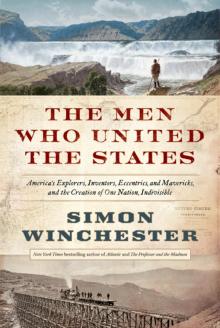 The Men Who United the States: America's Explorers
The Men Who United the States: America's Explorers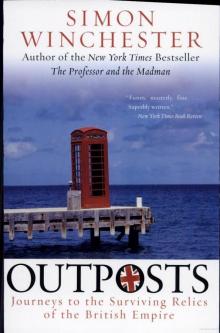 Outposts: Journeys to the Surviving Relics of the British Empire
Outposts: Journeys to the Surviving Relics of the British Empire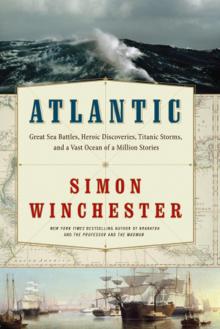 Atlantic: Great Sea Battles, Heroic Discoveries, Titanic Storms
Atlantic: Great Sea Battles, Heroic Discoveries, Titanic Storms The Professor and the Madman: A Tale of Murder, Insanity
The Professor and the Madman: A Tale of Murder, Insanity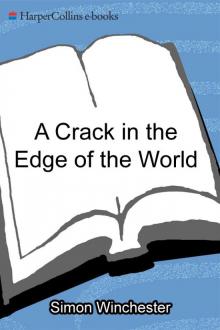 A Crack in the Edge of the World
A Crack in the Edge of the World The Perfectionists: How Precision Engineers Created the Modern World
The Perfectionists: How Precision Engineers Created the Modern World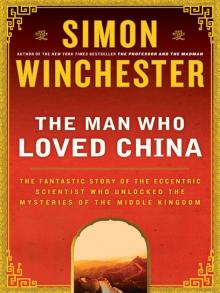 The Man Who Loved China: The Fantastic Story of the Eccentric Scientist
The Man Who Loved China: The Fantastic Story of the Eccentric Scientist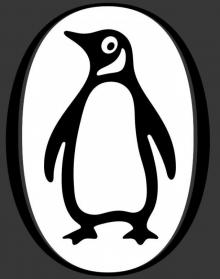 The River at the Center of the World: A Journey Up the Yangtze
The River at the Center of the World: A Journey Up the Yangtze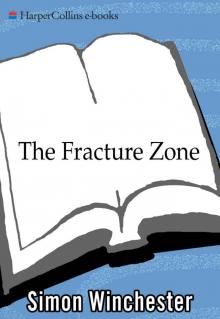 The Fracture Zone: My Return to the Balkans
The Fracture Zone: My Return to the Balkans The Map That Changed the World
The Map That Changed the World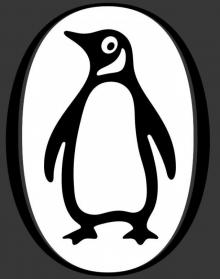 Krakatoa: The Day the World Exploded
Krakatoa: The Day the World Exploded The Man Who Loved China
The Man Who Loved China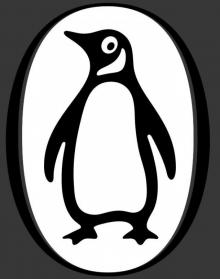 The River at the Centre of the World
The River at the Centre of the World Bomb, Book and Compass
Bomb, Book and Compass The Perfectionists
The Perfectionists The Meaning of Everything
The Meaning of Everything Exactly
Exactly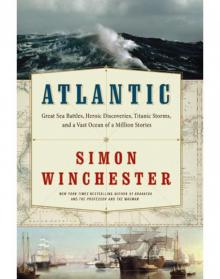 Atlantic
Atlantic Korea
Korea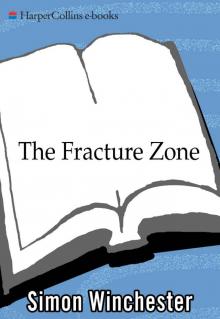 The Fracture Zone
The Fracture Zone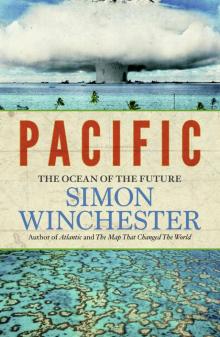 Pacific
Pacific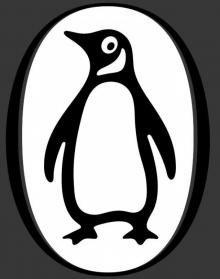 Krakatoa
Krakatoa The Professor and the Madman
The Professor and the Madman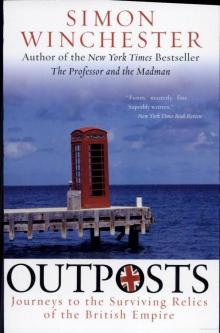 Outposts
Outposts